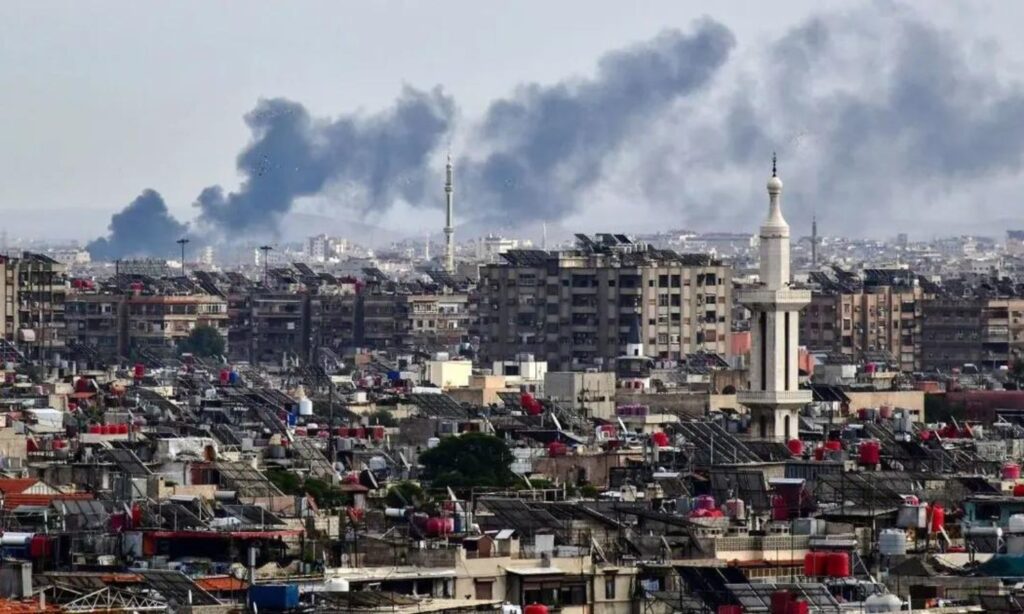The Ministry of Defense in the Syrian regime’s government announced targeting that affected military sites in southern Syria.
Through a statement published on its Facebook page today, Friday, April 19, the ministry clarified that the targeted sites were part of air defense.
The statement accused Israel of launching the attack on the military sites using missiles, indicating that material damage occurred.
Up to the moment of publishing this news, Israel had not announced an attack on Syrian military sites.
Israeli media, including The Jerusalem Post newspaper, limited itself to relaying the news from official Syrian media sources.
Russia Today channel reported that the airstrikes targeted military airports in the southern region of Syria, in the governorates of As-Suwayda and Daraa.
The targeted airports included al-Tha’lah, Azra, and al-Thaliha.
The shelling announced by the Ministry of Defense coincided with a drone attack targeting Iranian facilities inside Iran.
The Israeli channel “i24,” in a report it published today, said that Israel launched simultaneous strikes in Syria, Iraq, and Iran.
These targets have been described as a form of “retaliation” following the recent Iranian strikes, according to the report.
Local Syrian networks in As-Suwayda reported that Israeli planes flew in the skies of As-Suwayda and bombed the radar battalion located between the city of Izra and the town of Qarfa.
The Israeli strikes today are in line with what American officials declared on April 16.
The American network “NBC” quoted four unnamed American officials at the time, stating that the possible Israeli response to the Iranian attack was likely to include strikes against Iranian military forces and Tehran-backed proxies in Syria.
The roots of the military escalation date back to the Israeli attack on a building adjacent to the Iranian embassy in Mezzeh district in Damascus, which resulted in the death of senior officers in the Islamic Revolutionary Guard Corps (IRGC), specifically in the Quds Force, responsible for Iran’s foreign intelligence operations.
Among the dead was Mohammad Reza Zahedi, who was in charge of the Syrian and Lebanese files for the Quds Force, and one of the most prominent Iranian intelligence figures in the region.
On April 13 and 14, Iran launched drones loaded with explosives towards Israeli targets, in response to Israeli shelling that targeted the Iranian consulate.
Israel had indeed made a decision to launch retaliatory strikes against Iran on April 15, as reported by the American website “Axios,” citing five unnamed Israeli and American sources.
In a study published in December 2020 titled “Iranian Proxy Groups in Iraq, Syria, and Yemen: A Principal-Agent Comparative Analysis,” released by the Defense Technical Information Center of the United States, it presented answers to questions about Iran’s strategic environment and the proxy war it launched against the United States for years.
The 154-page study in its first chapter noted that nearly all offensive Iranian operations against American interests are executed by Tehran in collaboration with a proxy it supports, helping it through the provision of equipment and training, to avoid direct engagement with its adversaries.
Drawing on examples from the Iran-Iraq war and the impact it had on Iranians due to the scale of human losses it caused, the study itself saw that Iran avoids direct confrontation with the United States and NATO (North Atlantic Treaty Organization).











